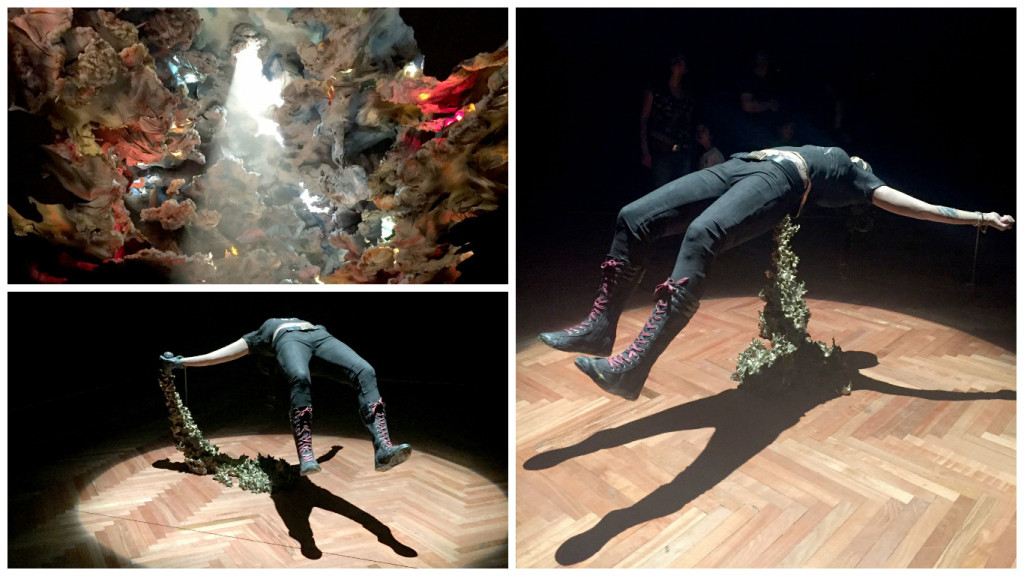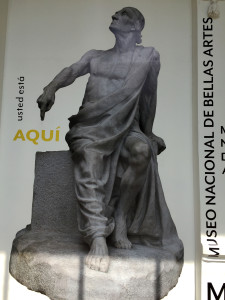 The Museo Nacional de Bellas Artes and adjoining Museo de Arte Contemporaneo are free to the public, and during our last week here, it’s about time we took advantage!
The Museo Nacional de Bellas Artes and adjoining Museo de Arte Contemporaneo are free to the public, and during our last week here, it’s about time we took advantage!
El Museo Nacional de Bellas Artes currently has a thoughtful exhibit on masculinity, exploring the concept of masculinity historically an throughout Chile’s history. Wonderfully, the exhibit used space to demarcate various subtopics within masculinity, such as power and submission in the masculine and feminine, violence exerted on men, women and children, homoeroticism, and voyeurism of the female body (this section cleverly had you walk through a doorway with a pulled back curtain to enter).
One of the rooms paid homage to the founders of art and art history in Chile, with a collection of portraits and self-portraits of influential artists and leaders of the arts academies encircling you as you explored. It seemed to be a simple and rather unexciting collection, but the point it made was the clear. In the entirety of Chile’s history there have only been TWO women directors of the school and museum of arts, neither of which had their own portrait (and both happened to be during the years of the dictatorship). Art, like so many other areas, has long been considered a man’s world. Interestingly, the curator of the whole Masculinity exhibit is a woman, Gloria Cortés.
A piece that I’d like to continue pondering is one that plays off of Frida’s “Las Dos Fridas.” From a performance art group, “Las Yeguas del Apocalipsis” a photo of two men sat in the section exploring the male body and homoeroticism (a second print was also exhibited in the Museo de Arte Contemporaneo, on the other side of the building).
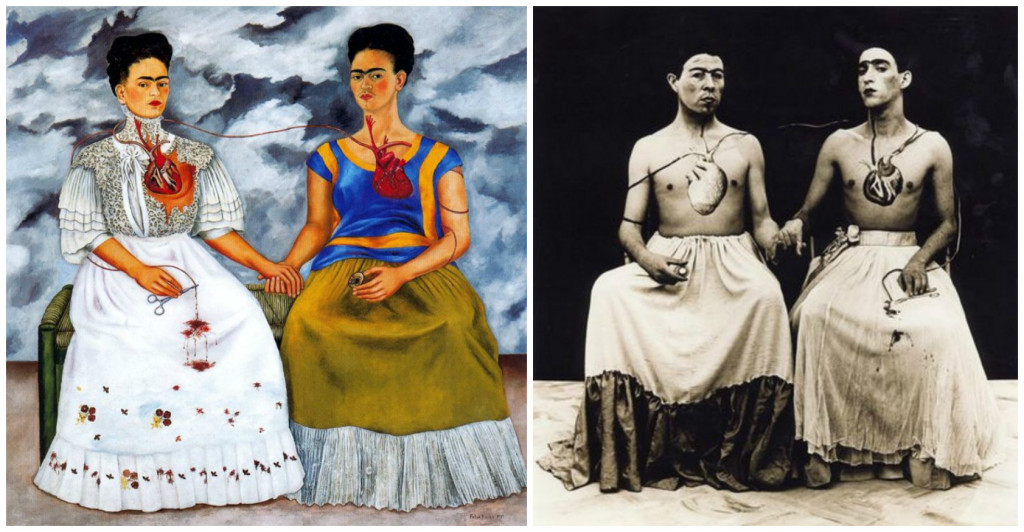
I looked up the artists and read the description of the work from their website. They’ve completely inverted the original painting, from who’s wearing what, to which heart is open, and, befitting in an exhibit about masculinity, the subjects’ sex/gender.
Apart from the masculinity exhibit, the museum’s temporary exhibition room held “The Rapture” from Norton Maza, a “3D painting” that took a team over a year to put together. A video outside the exhibition room played a video on the making of, and curtains kept the outside daylight from entering the room.
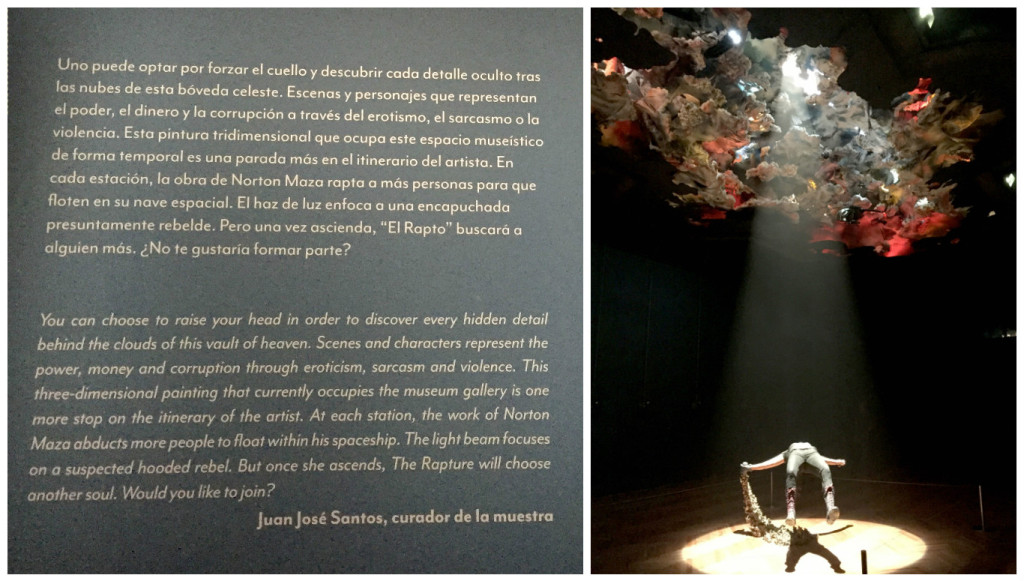
There were so many, many details in the 3D sky, like figurines of Ronald McDonald, the Hulk, a Storm Trooper, even what looked to be Ironman with a hammer/sickle among the various vehicles of war (helicopters, naval vessels, aircraft). Underneath the busy cloud, a body of a faceless woman (a cloth covers her face) floats weightlessly under the spotlight, as if it’s being abducted.
As I mentioned earlier, el Museo de Arte Contemporaneo shares the building with Bellas Artes, and they’re connected by a hallway. The contemporary art was interesting as there were many mediums, though with fewer unifying themes throughout the rooms here. I noticed a beautiful painting of horses was created by Maria Delia del Carril, Neruda’s second wife!
My favorite piece was the one below, a series called “Constellations,” mainly because it made me wonder what we could imagine if we saw the sky anew, from a different perspective than the Greeks. What interesting shapes, creatures, and stories would we dream up?
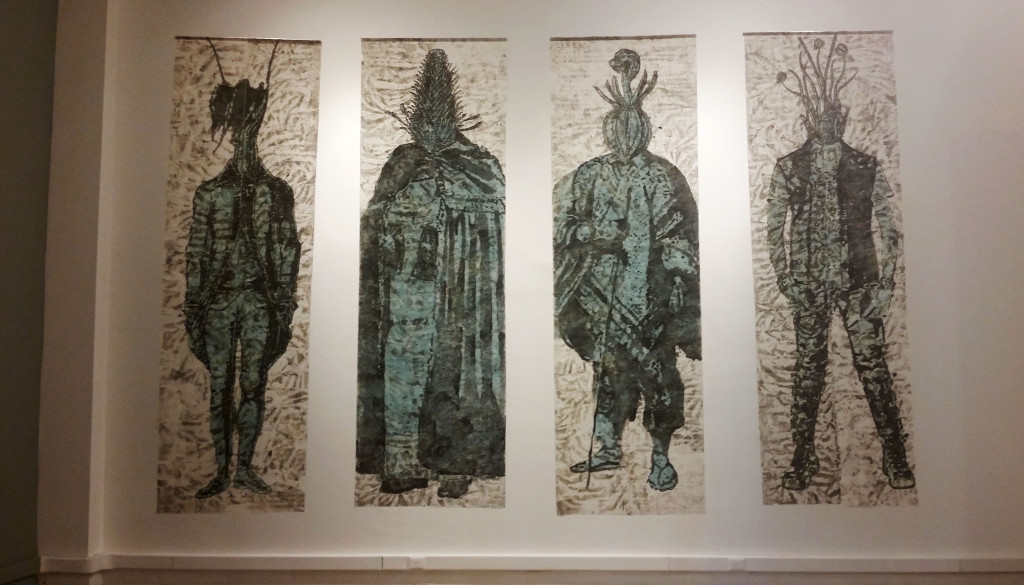
The most unsettling piece, in both museums, had to be “A Blind Movie.”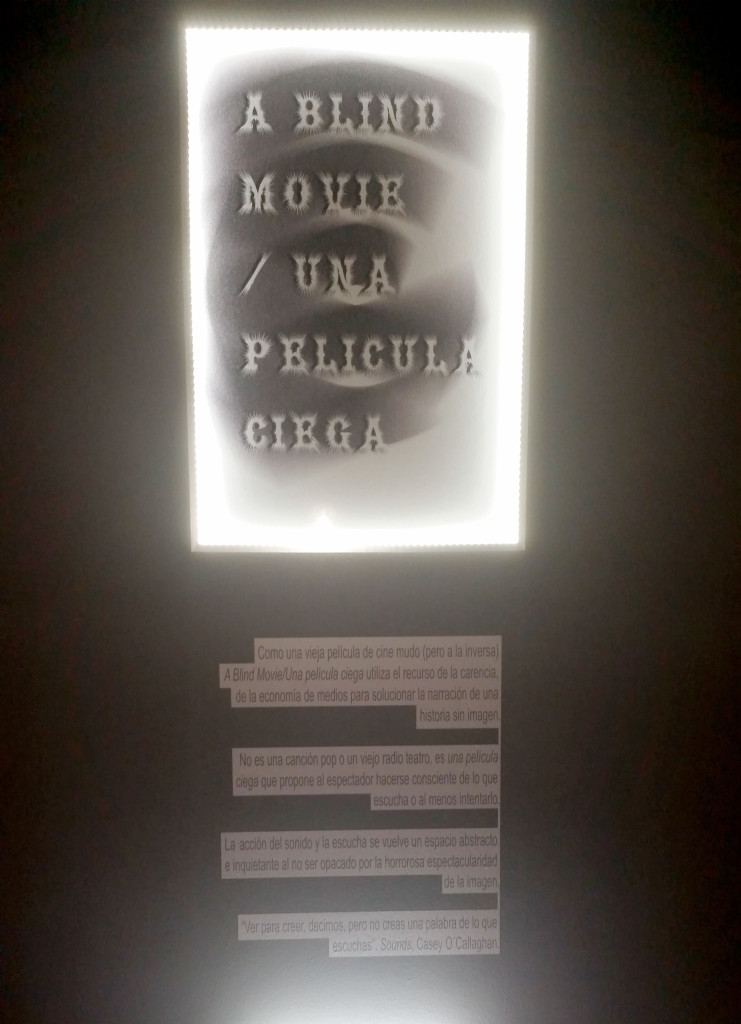
It consisted of a dark room with no lights, 6 or so mismatched and randomly placed chairs atop rugs (one of them was facing all the others), along with a projector playing a black screen. Audio was loud and clear, and during my time there I’d heard 3 different languages (Spanish, English, and a Chinese dialect). The whole piece was about half an hour, but after 5 to 10 minutes I felt I’d had enough.
I didn’t understand much (not even the English), but the longest part during the portion I encountered was in Spanish and seemed to be a phone conversation between two guys. “It’s me,” the caller said, and the listener made no response, leaving it was unclear whether or not the two knew each other. “Look, I am not mentally ill or anything, but your voice sounds an awful lot like mine,” he says hurridly, “how did you get your voice to sound like mine?”
It was discomforting. Another couple entered, sat, and left, all within the same 60 seconds. It did leave me wondering though, is this disorientation and discomfort what it’s like to be blind?
What are your thoughts on the art (and what it means)?

